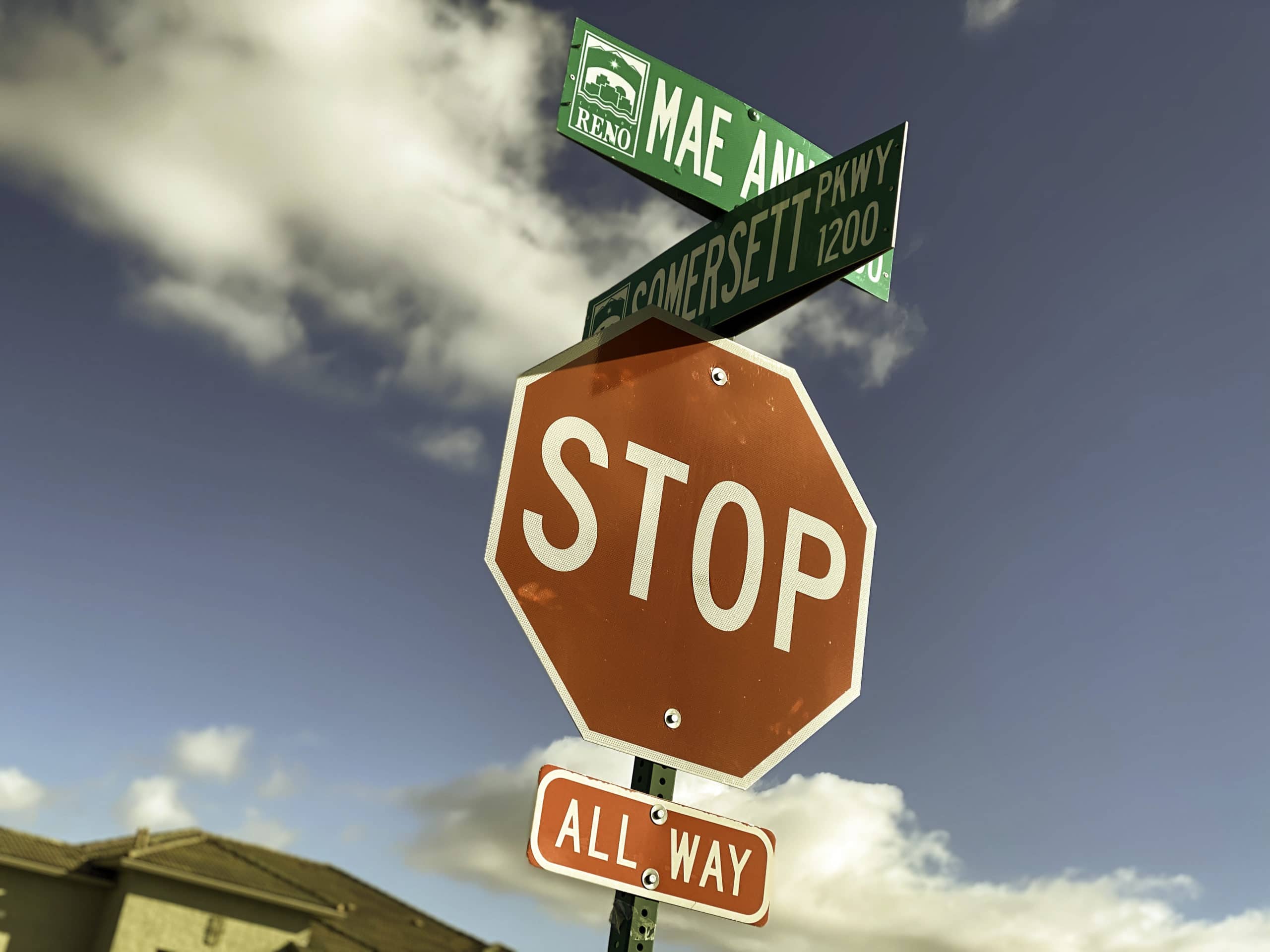As the rapidly growing population of Reno exceeds its infrastructures, traffic accidents are on the rise. Pedestrian and auto accidents are a daily occurrence in once quiet neighborhoods, and the intersection of Sharlands and Mae Anne avenues is no exception.
Located only a short distance east from the ever-expanding Somersett community in northwest Reno, the intersection is becoming increasingly problematic for both city officials and local residents. The site boasts approximately 20 intersecting lanes, including bike lines and pedestrian crosswalks, with only a few respective stop signs as traffic control.
Local residents like Justin Cardoza have documented and filed reports on the intersection, which ironically is home to a Reno Fire Department station. Cardoza, who lives with his girlfriend in an apartment complex adjacent to the intersection, avoids it whenever possible.
“You can’t really go through there without having a close call anymore,” he said. “It’s worse than that even. I’ve seen plenty of people just blow right through, going straight through, not even slowing down. They get away with it sometimes when there isn’t another car there, and other times, like twice last week, there is another car there and they have to shut down the intersection for an hour while they clean it up.”

Stop: just a suggestion
Cardoza’s description was accurate. I experienced it myself as I tested the intersection both prior to, and during our interview.
On the second account, he and I approached the intersection from the south. Having arrived first to the intersection, we signaled to turn left from Mae Anne Avenue onto Sharlands (which becomes Somersett Parkway at that point) and proceded with caution into our turn.
Without fail, a vehicle approaching opposite us turned directly into our lane. We noted the driver had not only failed to stop at the sign, but in fact never turned her head in our direction, instead only looking to her left down Sharlands towards oncoming traffic. We managed to avoid a collision, but were issued an extremely rude gesture in return for our diligence.
“That, too, is fairly common. It seems like a lot of people consider the stop sign more of a suggestion, and will only stop if they physically have to in order to avoid a crash,” Cardoza noted.
Concerned residents have managed to draw city officials’ attention to the problem.
Lauren Ball, public information officer for the Regional Transportation Commission, said the intersection has been under investigation by the RTC since 2007 and that, “Construction is set for summer or fall of this year for traffic signals.
“Traffic volumes have really increased over the last three years. Crashes are happening and traffic volumes are increasing, so we are really looking how we can make this intersection more safe for everyone who drives through it.”
Ball was not the only concerned official. The Reno Police Department shares many of the concerns of both the RTC and the neighborhood residents, many who appeared to have no idea where the right of way belonged.

There’s a law for that
“It is a common occurrence that etiquette usually dictates who goes first when cars arrive at the intersection at the same time,” said Travis Warren, public information officer for the Reno Police Department.
Warren was a little uncertain, though, as to what the exact law was. After a quick search he sourced a Nevada Revised Statute that clarified the appropriate procedure.
According to NRS 484B.250 (Vehicle approaching or entering intersection), subsection two, the law states: “When two vehicles enter an intersection from different highways at approximately the same time, the driver of the vehicle on the left shall yield the right-of-way to the vehicle on the right.”
This was in accordance with officer Warren’s initial suggestion that it is “usually the car to the right that goes first.”
As Reno continues to grow, and traffic along with it, there seems to be one common concern shared by citizens and officials alike. The drivers in Reno need to take some responsibility for not only for understanding traffic laws, but obeying them.
After witnessing 5 out of 6 cars completely ignoring the stop sign, Cardoza eloquently summed up our experience.
“This is every day. I feel like this intersection is even worse than the rest of town. I don’t feel like I should have to risk my life to get home,” he said.

